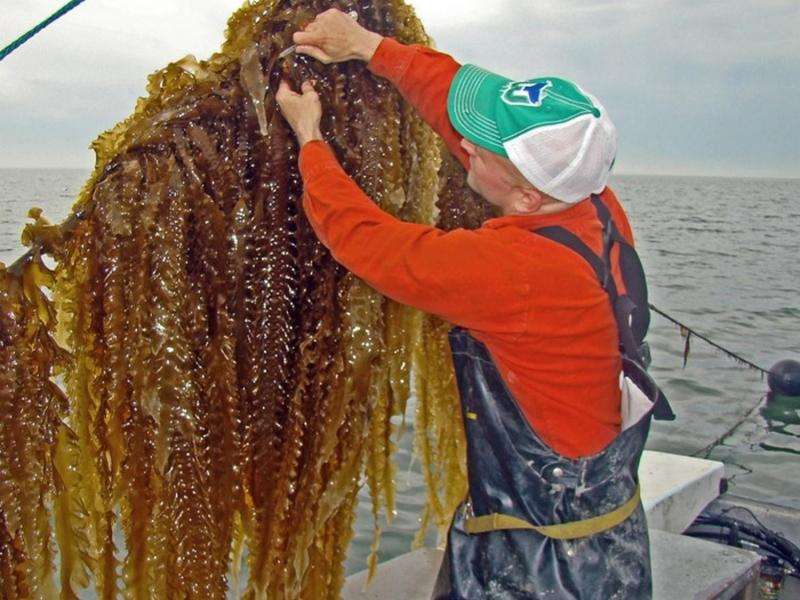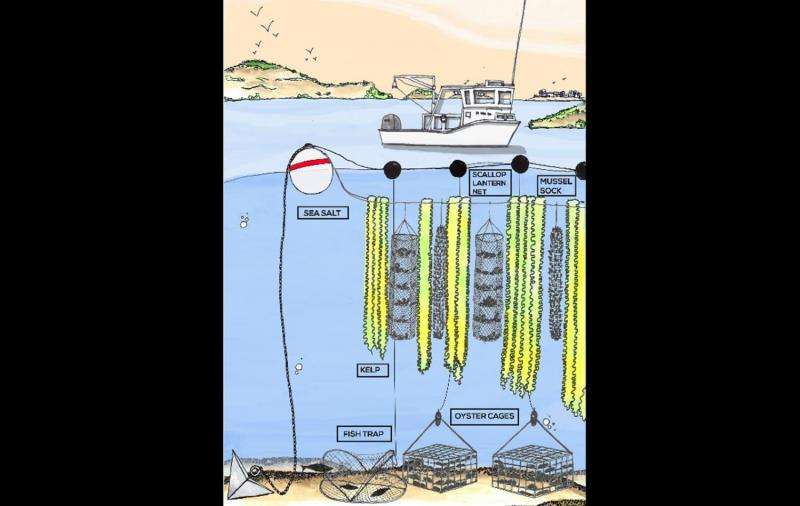October 27, 2015 weblog
Farming the sea: Prize-winning model to restore ecosystems

A fisherman working in industrialized fishing environments realized something that affected his fundamental outlook on what he was doing: he was witnessing very efficient fishing technologies and boats ripping up entire ecosystems with trawls; he was seeing efficient technologies being applied in ways that were chasing fish farther and farther out to sea.
Bren Smith eventually went on to develop a model for ocean farming. He is executive director of GreenWave, and he is on a mission to help support ocean life and human life. His farm design has won a prize in the 2015 Buckminster Fuller Challenge given by the Buckminster Fuller Institute.
He is recognized for coming up with an innovative solution in sustainable ocean farming, a model for development of multi-species ocean farms.
Biofuels Digest talked about what is special about Smith's concept—a shift away from growing vulnerable monocultures to vibrant ecosystems, which can result in higher yields.
The push is for sustainable aquaculture that produces high yields while restoring and improving the ocean's ecosystems.
Bren Smith said, "We hope that our model of 3D ocean farming will be a catalyst for the restoration of ocean ecosystems, mitigating of climate change and helping feed the planet."
"The infrastructure is simple: seaweed, scallops and mussels grow on floating ropes, stacked above oyster and clam cages below. From these crops ocean farmers can produce food, fertilizers, animal feeds, pharmaceuticals, cosmetics, biofuels and much more. The farms filter harmful pollutants out of water, sequester CO2, support biodiversity, and are thus designed to restore rather than deplete our ecosystems," wrote Meghan Sapp in Biofuels Digest.
Dr. Charles Yarish of the University of Connecticut, an expert in growing seaweed, has given Smith valuable input.
A staff writer for The New Yorker visited Smith on his farm where among other things he grows seaweed. She said he preferred to call his produce "sea vegetables." She said he also raises mussels, scallops, clams, and oysters in lantern nets shaped like accordions and stacked pyramids.

The writer, Dana Goodyear, sketched out his vision: "As industrial land-based agriculture becomes increasingly untenable—environmentally destructive and at the same time vulnerable to drought and changing weather—we are being pushed out to sea. Smith says, 'The question is, Are we going to do it right or wrong?' He calls his system, which uses the entire water column, a '3-D farm,' and he would like to see it become the dominant form of aquaculture. He would like to see kelp—a potential source of human food, biofuel, and animal feed—supplant crops like corn and soy."
Goodyear called up some compelling points: The ocean covers seventy per cent of the earth and produces less than two per cent of our food. To grow the rest, we use almost forty per cent of the world's land and nearly three-quarters of our fresh water.
"We haven't begun to explore the ocean as a food source," Mike Rust, an aquaculture scientist with the National Oceanic and Atmospheric Administration, told the writer.
GreenWave has created an open source model that anyone in the world is free to replicate.
But is anything actually happening? The Guardian reported that (1) GreenWave is in the process of developing eight farms from southern new England to New York. (2) The group also has a hatchery and (3) are currently building a food truck, which Smith says will be the ambassador of a new cuisine inspired by these farms. (4) They are also developing what they called a seafood hub in Fair Haven, Connecticut, to package and distribute crops from new and existing farms.
© 2015 Tech Xplore















